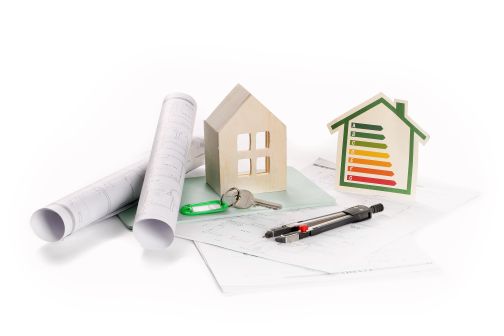Has the industry seen the changes it asked for in reply to the Decarbonising Heat in Homes Call for Evidence?

June 15th 2022, saw the new Building Regulations Part L, F and O 2022 coming into law. Now that we are over a year further on the trajectory of decarbonisation, we are looking at some of the challenges raised by the industry in the 2021 Decarbonising heat in homes call for evidence by the Department for Business, Energy and Industrial Strategy (BEIS).
Decarbonisation of heat in both new and existing housing stock plays a significant role in achieving the UK’s 2050 net zero target. The Heat and Buildings Strategy, published on October 19th 2021, was a much-anticipated step, crucial for priming the industry for the challenges decarbonisation of heat would bring.
The next step on UK’s path to net zero carbon ready buildings was the publication of updated Approved Document L, Approved Document F, and the new Approved Document O. The updated regulations are in effect from June 15th 2022, with a one-year transitional period. The Future Homes Standards will come into force in 2025, with a headline for CO2 emissions reduction in new homes expected to be 75-80%. The introduction of these future standards will be preceded by a full technical consultation scheduled for 2023.
Is the industry prepared for another round of regulatory changes? Is more support needed to overcome the challenges ahead? What kind of backing does the industry need for a sustainable transition to net zero carbon ready buildings? We will look at the key areas that may impact the speed of the heat decarbonisation process.
What areas of the Heat and Buildings Strategy does the industry consider key to successful decarbonisation of heat?
Whilst heat pump technology is not the silver bullet solution to heat decarbonisation, highly efficient heat pumps will play a considerable part in getting our buildings net zero carbon ready. There are seven areas the industry recognises will need support:
- Long-term energy efficiency targets for all types and tenures of buildings across sectors
- Increasing public awareness of heat pump technologies
- Measures for tackling the low carbon technology skills gap
- Long term funding plans and policies to help decarbonise existing buildings
- Extended local regulatory powers
- Energy levies implementation
- Proactive plans to develop better energy infrastructure
You can read more about how improvements in each area could promote confidence and attract investment in heat pump technologies here.
The Heat and Buildings Strategy outlines plans for the first three areas, including new funding streams, and also touches upon retrofit challenges. The remaining four areas remain only vaguely addressed at this time.

Decarbonising heat and what lessons have been learnt?
We could learn valuable lessons from past UK legislation and the approaches to decarbonisation taken by other countries in recent years. One of them is swapping short term focus on an interim solution for immediate carbon reduction goals. Long-term carbon setting is one of the strategies implemented by some European counterparts. Along with decisive action by the government, this has shown in countries like Denmark to help create stability in the heat pump market, and it strongly supports industry growth.
Whilst we can certainly learn from these sources, the UK has some market specific challenges and barriers that could slow down the much-needed increase in uptake of heat pump technologies.
What are the barriers to increased uptake of low carbon heating technologies?
These barriers align with the seven key areas we discussed in the second paragraph of this blog:
- Regulatory backing
- Long term outlook
- Financial support
- Energy levies
- Skills shortage
- Grid (and demand) flexibility
- Education of the wider public
You can read more on where the impact of these barriers will likely be seen here.
The UK is still highly dependent on fossil fuels as both a primary energy source and a backup for the intermittent supply gaps from renewable sources such as wind. To achieve the environmental targets set for 2050, we need to address the primary use and secondary backup scenarios, to help us scale up and speed up our decarbonisation efforts.

How can reasonable distribution of cost support the decarbonisation of heat?
Energy levies are at the centre of attention during the current energy crisis, with calls for more discussion and clarity around the fact that decarbonising will be costly, and we will all bear some of the costs of decarbonisation.
Not decarbonising is not an option; we simply must do it. However, the cost distribution should be fair, particularly when navigating the issues around fuel poverty. A review of the energy levies and historic green levies could help resolve some of the challenges in energy costs, and funding reviews could ensure that money is allocated to areas that need the most support. You can read more about the reasonable distribution of costs in our blog.
Which technologies are the most viable to deliver the decarbonisation of heating?
Whilst cost allocation and funding are complex, in our blog, we considered viable technologies to deliver decarbonisation of heat that are available now. Heat pump technologies, flexible energy storage and similar innovative solutions can help support the electrification of heat. As primary energy and carbon emission reductions have become two of the four critical factors to compliance with the updated Part L, highly effective, low carbon solutions can help us eliminate fossil fuels as energy sources to heat our homes.
Fully electric solutions that use the Edel hot water heat pump by Dimplex are just one of the technologies that can be installed today. Communal ambient networks that use in apartment heat pumps connected to a central ambient loop, such as the Zeroth Energy System, is another.
The updates to SAP methodology support the electrification of heat in the form of electricity, having the lowest carbon factor of the traditional fuel sources. Whilst the primary factor of electricity is still relatively high, the steady increase in renewable generation will reduce this over time.
Visit our page dedicated to New Building Regulations that came into force in June 2022. to find out more information. To discuss how low carbon technology can be integrated within your residential, commercial or retrofit project or to find out more about low carbon energy strategies, contact our team of HVAC specialists.








